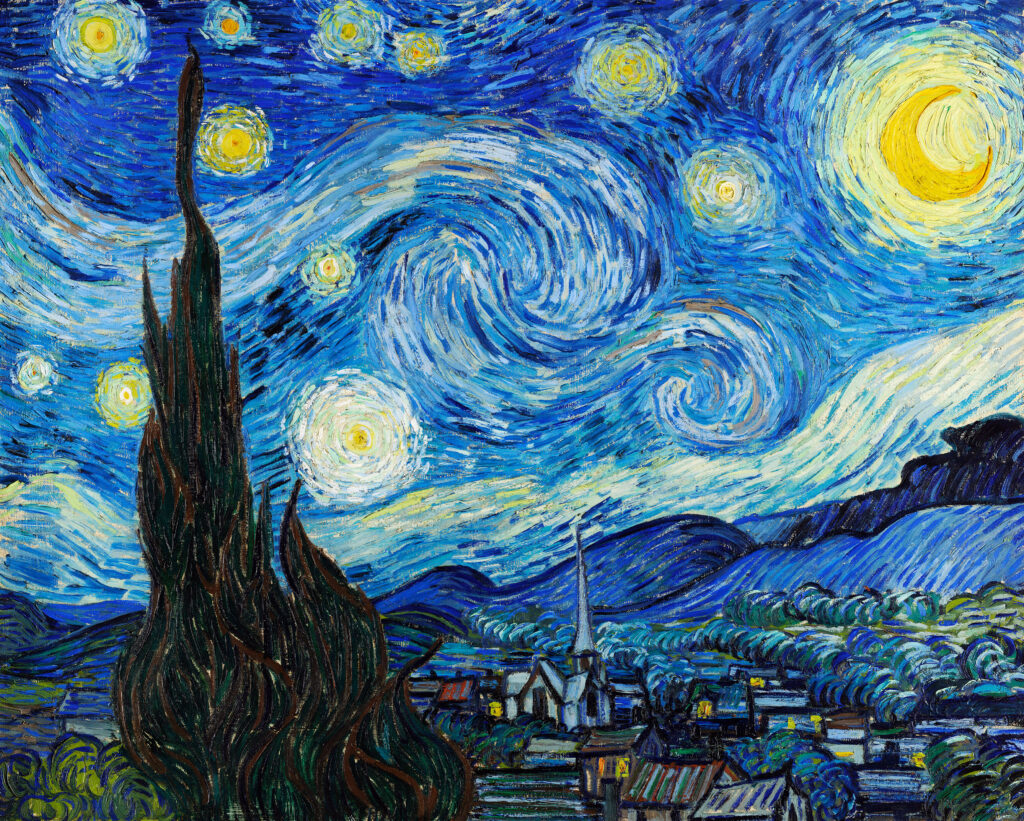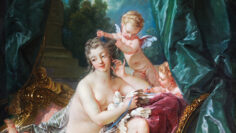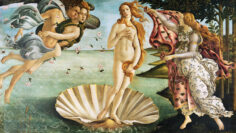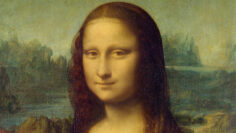The Starry Night is an oil-on-canvas painting by Dutch Post-Impressionist painter Vincent van Gogh. Created in June 1889, it is set in a field of roiling energy below exploding stars with a small village and flamelike cypress tree that connects the earth and sky.
The painting depicts the view from the east-facing window before sunrise of the room at the Saint-Rémy-de-Provence asylum where Van Gogh stayed for a year. It uses ultramarine and cobalt blue in the sky, and for the stars and the moon he employed the rare pigment indian yellow together with zinc yellow.
Van Gogh wrote of his inspiration for the painting to his brother Theo: “This morning I saw the country from my window a long time before sunrise, with nothing but the morning star, which looked very big.”
The painting is rooted in imagination and memory. Leaving behind the Impressionist doctrine of truth to nature in favor of restless feeling and intense color in this highly charged painting, Van Gogh made his work a touchstone for all subsequent Expressionist painting. Widely regarded as his magnum opus, the Starry Night is one of the most recognizable paintings in Western art.
About Vincent van Gogh
Vincent Willem van Gogh was a Dutch Post-Impressionist painter who is among the most famous and influential figures in the history of Western art. Born into an upper-middle-class family in 1853, as a young man he worked as a traveling art dealer, so was keenly aware of modernist trends in art.
In over a decade he created approximately 2100 artworks, including around 860 oil paintings, most of them in the last two years of his life. Only one of his paintings was known to have been sold during his lifetime. His younger brother, Theo, supported him financially, the two of them were very close and kept up a long correspondence by letter.
Van Gogh suffered from psychotic episodes and delusions, often neglected his physical health and spent a lot of time in psychiatric hospitals. He worked closely with another famous painter of his time Paul Gauguin; however their friendship ended after a confrontation with a razor when, in a rage, he severed part of his own left ear after which he admitted himself to the Saint-Paul-de-Mausole asylum.
On 27 July 1890, Van Gogh is believed to have shot himself in the chest with a revolver, dying from his injuries two days later. He was only 37 at the time. His brother, Theo, died less than six months after Vincent, in January 1891.
Death was not ominous for van Gogh. “Looking at the stars always makes me dream,” he said, “Why, I ask myself, shouldn’t the shining dots of the sky be as accessible as the black dots on the map of France? Just as we take the train to get to Tarascon or Rouen, we take death to reach a star.”
His time at Saint-Paul-de-Mausole Asylum
After his first major breakdown which resulted in the self-mutilation of his left ear in December 1888, Van Gogh admitted himself to the Saint-Paul-de-Mausole lunatic asylum. Housed in a former monastery, it catered to the wealthy and was less than half full when he arrived, allowing him to occupy not a second-story bedroom along with a ground-floor room that he used as a painting studio.
During his time there he produced some of his best-known works, including the Irises, his blue Self-Portrait and The Starry Night. Although The Starry Night was painted during the day in his ground-floor studio, it would be inaccurate to state that the picture was painted from memory. The view has been identified as the one from his bedroom window, facing east.
“Through the iron-barred window”, he wrote to his brother, Theo, “I can see an enclosed square of wheat … above which, in the morning, I watch the sun rise in all its glory.”
Van Gogh experienced his second breakdown in July 1889, after which in a “state of heightened reality,” he threw himself into the painting of the stars found in the Night Sky, producing “a sky unlike any other the world had ever seen with ordinary eyes.”
He wrote about existing in another dimension after death and associated this dimension with the night sky. “It would be so simple and would account so much for the terrible things in life, which now amaze and wound us so, if life had yet another hemisphere, invisible it is true, but where one lands when one dies.”
Did you know
Van Gogh became famous after his suicide and his life story captured public imagination as an emblem of misunderstood genius. Today his works are among the world’s most expensive paintings, and his legacy is honored by the Van Gogh Museum in Amsterdam, which holds the largest collection of his paintings and drawings.





